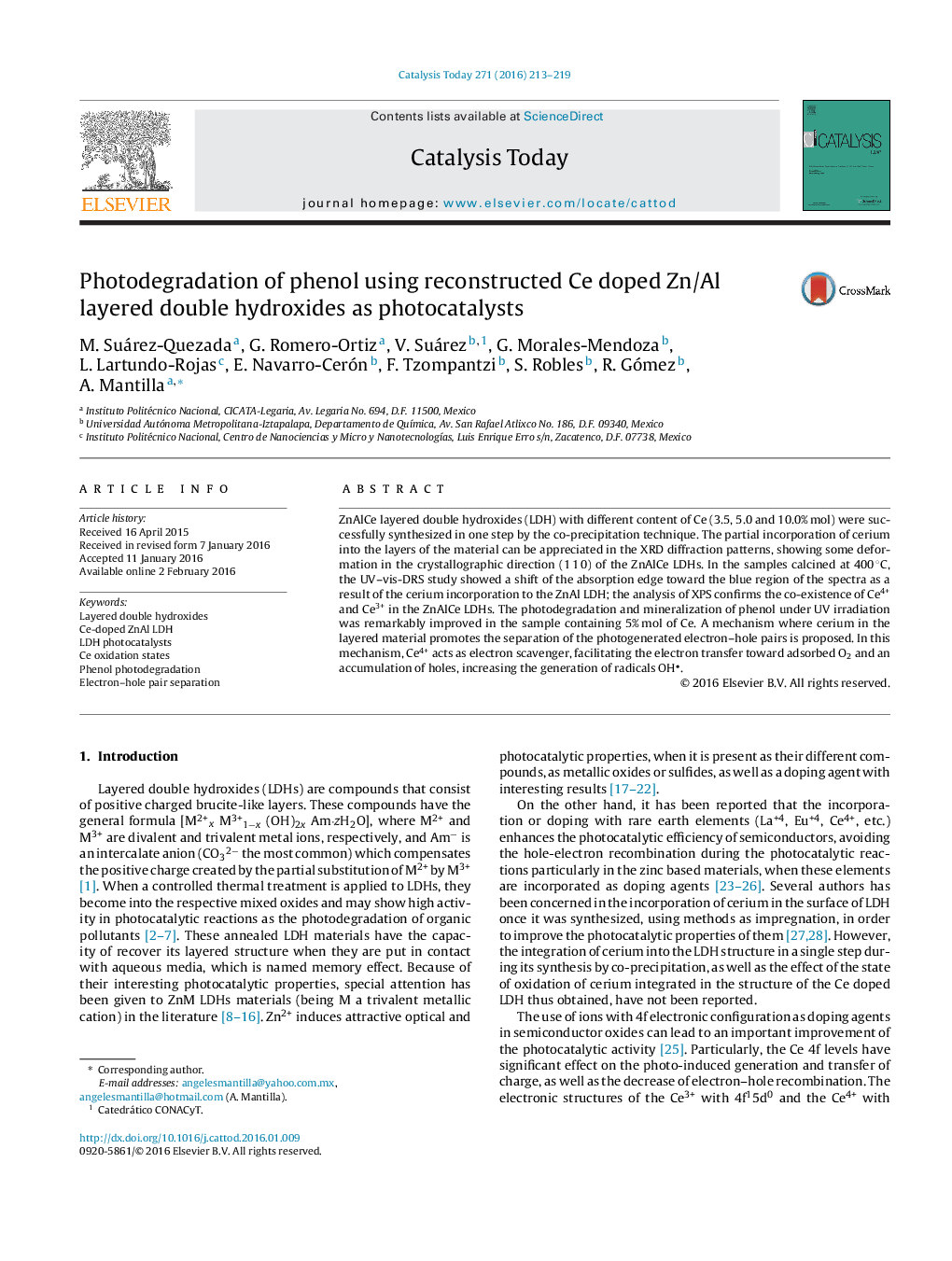| Article ID | Journal | Published Year | Pages | File Type |
|---|---|---|---|---|
| 53536 | Catalysis Today | 2016 | 7 Pages |
•Ce was incorporated to ZnAl LDH by coprecipitation in a single step.•A distortion of the atomic planes in the direction [1 1 0] is produce by Ce ions.•XPS study confirms the co-existence of Ce4+ and Ce3+ species.•Ce4+ acts as a trap of the photogenerated electron, decreasing the recombination.•The maximum content of Ce for an optimal photocatalytic behavior is 5%.
ZnAlCe layered double hydroxides (LDH) with different content of Ce (3.5, 5.0 and 10.0% mol) were successfully synthesized in one step by the co-precipitation technique. The partial incorporation of cerium into the layers of the material can be appreciated in the XRD diffraction patterns, showing some deformation in the crystallographic direction (1 1 0) of the ZnAlCe LDHs. In the samples calcined at 400 °C, the UV–vis-DRS study showed a shift of the absorption edge toward the blue region of the spectra as a result of the cerium incorporation to the ZnAl LDH; the analysis of XPS confirms the co-existence of Ce4+ and Ce3+ in the ZnAlCe LDHs. The photodegradation and mineralization of phenol under UV irradiation was remarkably improved in the sample containing 5% mol of Ce. A mechanism where cerium in the layered material promotes the separation of the photogenerated electron–hole pairs is proposed. In this mechanism, Ce4+ acts as electron scavenger, facilitating the electron transfer toward adsorbed O2 and an accumulation of holes, increasing the generation of radicals OH.
Graphical abstractA distortion of the atomic planes in the direction [1 1 0] appears with the presence of Ce in ZnAlCe LDHs. A proposed mechanism explains the role of Ce4+ in ZnAlCe LDHs, acting as a photogenerated electron (e−) scavenger and producing an accumulation of photogenerated holes (h+), which may help the OH radicals generation.Figure optionsDownload full-size imageDownload high-quality image (160 K)Download as PowerPoint slide
